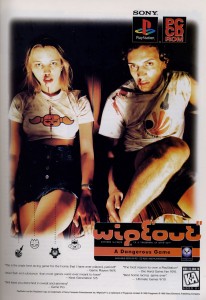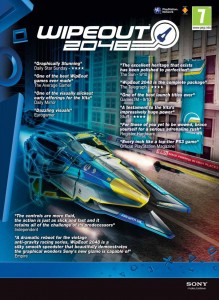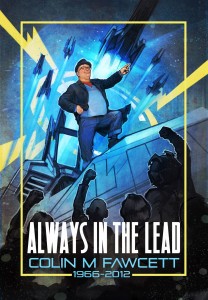Studio Liverpool Closed – The End Of An Era
- Updated: 23rd Aug, 2012
Yesterday was a terrible day for the UK games industry when Sony announced the closing of SCE Studio Liverpool. The WipEout 2048 Facebook page was updated with the following sad message:
As some of you may have heard Sony have chosen to close Studio Liverpool as of today.
This page will no longer be maintained by the WipEout Team.
We have loved making every game, every minute and every one of you. Keep the faith, keep loving WipEout.
Thank you for everything, Pilots. It’s been an amazing journey and we’ll miss you.
x
Sony Corporation posted a record annual loss of £4bn back in April which heralded changes throughout the Sony empire. With PS Vita hardware sales being trounced by the Nintendo 3DS and even the ageing PSP, changes in the makeup of Sony’s development studios is not surprising. Although Sony did point out in their statement about the closure that many other parts of the Liverpool facility will continue to exist, the development team has gone. For Sony there is no place for sentimentality in business.
Well, I’m going to get sentimental and misty-eyed as I’ve been playing their brilliant games for the past 23 years of my life.
Psygnosis (1985 – 2001)
Founded in 1985 as Psygnosis, it was responsible for some of the most memorable 16-bit games ever made. I remember reading about and then finally seeing Shadow of the Beast (1989) for the first time on my Commodore Amiga A500. I was stunned, mainly by the twelve levels of parallax scrolling backdrops, which at the time were astounding. I would leg it back from school each night to get my gameplay fix (aka dying a lot).
The side-scrolling shooter Agony (1992) first introduced me to the fantastic music of CoLD SToRAGE and Walker (1993) put me in charge of giant ED-209 look-a-like. I had more fun than I’d care to admit gunning down little stick men and turning them into little piles of red-coloured pixels.
Many years later, Psygnosis was bought by Sony to work on games for its upcoming PlayStation console and WipEout (1995) was born. I still remember walking into the branch of Electronic Boutique (which later became GAME) on London’s Oxford Street and buying WipEout as my very first PlayStation game. I was excited.

I loved everything about the game. The graphics, sound and gameplay were perfect. I played it religiously, until I finished the game and had a perfect lap on every track, even the nightmarish Silverstream. CoLD SToRAGE’s music, which was such a huge part of the game then became a constant feature of my running music and has helped me train for and complete three London marathons, many half-marathons and 10km races.
Psygnosis worked with a graphics design studio called The Designers Republic to create the futuristic look of the game. PlayStation consoles then appeared in London’s Ministry of Sound nightclub so people could play while having a drink and relaxing. And this was before videogaming became mainstream. WipEout was cool.
A young Sarah Cox, soon-to-be TV presenter and Radio 1 DJ starred in one of the early WipEout adverts with the prototype also appearing in the 1995 movie Hackers. Most recently the game was featured in the V&A’s British Design 1948 – 2012 exhibition.
Then followed Destruction Derby (1995), WipEout 2097 (1996), Colony Wars (1997) and Wip3out (1999). All utterly brilliant games. Colony Wars especially, was criminally under appreciated while WipEout 2097 is still one of the best racing games ever released.
Psygnosis didn’t just develop amazing games it also published a whole raft of memorable ones too – Blood Money, Lemmings, Walker and Hired Guns (DMA Design, now Rockstar North), Benefactor (Digital Illusions, developers of Battlefield) and Formula 1 97 (Bizarre Creations) being some of my personal favourites. They also published the Discworld games in 1995 and 1996 much to the delight of our editor-in-chief Debbie.
SCE Studio Liverpool (2001 – 2012)
In 2001 the studio was rebranded as SCE Studio Liverpool and the famous Psygnosis name and Owl logo were consigned to history.
The studio continued to produce WipEout games with WipEout Pure (2005) and Pulse (2007) for the PSP. It was a joy to play these new WipEout games after the terrible WipEout Fusion (2002) had, in part, killed my enthusiasm for the series. They also released number of Formula 1 games between 2001 – 2007, but for me Studio Liverpool was all about WipEout.
Then came WipEout HD (2008) for PlayStation 3 and the HD/Fury expansion pack in 2009. Both were amazing games featuring remastered racing tracks from the PSP WipEout games and some eye-wateringly beautiful graphics. If you were a WipEout fan, like me, life was very good.
Which brings us to WipEout 2048 (2012) on the PS Vita. Last year, when I interviewed Stu Tilley, Game Director of WipEout 2048 and asked about the development team, he told me that:
there is one guy who has been there since the Psygnosis days and worked on them all the way through. Sixteen years of service, I think. We’ve got guys who have worked on the PS1, PS2, PSP games. Most of our studio has worked on at least one WipEout game

There was such a deep history with WipEout at the studio. You could tell how much these people loved making WipEout games when talking to the game directors, the artists and designers. I got to know a lot of the team at Studio Liverpool personally through my work with The Average Gamer. They are some of the nicest and most talented people I know.
A quote from my review of the single-player game was even used in a print advert for WipEout 2048. For someone that has grown up with WipEout, seeing my words associated with the game made me so happy. There I was casually flicking through a copy of MCV when I noticed an advert for WipEout 2048 and then the words – The Average Gamer. OMG!
Only a few months ago, the studio dropped the bombshell that both WipEout HD and Fury were coming to WipEout 2048 as DLC packs. These packs were free if you’d already bought the PS3 versions. Along with MotorStorm: RC, WipEout 2048 really showcased the power of the PS Vita. They were the must buy games at the console’s launch.
The Saddest Week:

On Monday, the funeral took place for Studio Liverpool’s veteran artist Colin Fawcett who had sadly lost his battle with cancer on the 9th Aug 2012. He’d worked on WipEout Pure, Pulse and HD. The studio posted a fitting tribute picture on their Facebook page and Twitter profile.
However, the week was to get even worse. On Wednesday Sony extinguished 28 years of videogames history, with the following depressingly corporate statement.
It has been decided that Liverpool Studio should be closed. Liverpool Studio has been an important part of SCE Worldwide Studios since the outset of PlayStation, and have contributed greatly to PlayStation over the years. Everyone connected with Liverpool Studio, past and present, can be very proud of their achievements.
However, it was felt that by focusing our investment plans on other Studios that are currently working on exciting new projects, we would be in a stronger position to offer the best possible content for our consumers. Our Liverpool Facility will continue to operate, housing a number of other vital WWS!E and SCEE Departments.
I will miss Studio Liverpool terribly. Since 1989 their games have been entertaining and amazing me with their graphics and gameplay. They have changed my life through the music they have composed and help nurture my love of videogames. With every bit of Sony gaming hardware there was a new Studio Liverpool game to play on it. No longer.
I’m excited to see what the staff do next. We might even see some new studios rise from the ashes. But for Studio Liverpool and WipEout, the futuristic racing franchise they created nearly 20 years ago, their work has now ended. For me, that’s the hardest thing of all to accept.

One Comment